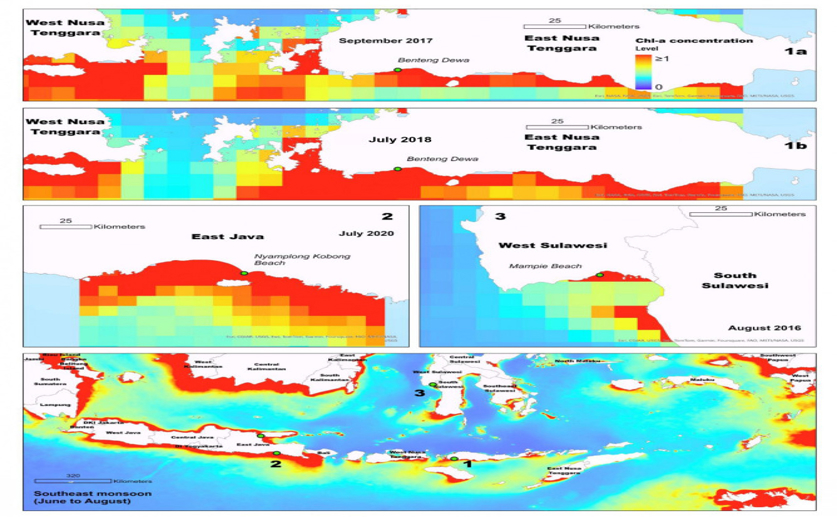Greg Howard
20th October, 2025

Spatial association between mass whale shark stranding events and upwelling patterns.
Key Findings
- This Indonesian study analyzed 13 years of whale shark stranding data, revealing an increasing trend in these events
- Most stranded whale sharks (70%) were large juveniles, suggesting this life stage is particularly vulnerable to factors causing strandings
- The southern coast of Java is a hotspot for strandings, often linked to upwelling events which attract whale sharks while potentially increasing risk
The study analyzed data from 115 whale shark stranding events in Indonesia over a 13-year period, gathered from various sources including publicly available databases, reports, news articles, and scientific publications. The research focused on several key aspects of the strandings: the size and age of the sharks, where the strandings occurred, and whether these events correlated with oceanographic conditions.
A significant finding was that a large majority – 70% – of the stranded whale sharks were large juveniles, measuring between 4 and 7 meters in length. This suggests that juvenile whale sharks may be particularly vulnerable to whatever factors are causing the strandings. Furthermore, the study revealed a clear increase in stranding cases over the 13-year period, indicating a growing problem.
The southern coast of Java was identified as a major “hotspot” for strandings. Interestingly, these events were often linked to periods of strong upwelling – a process where deep, cold, nutrient-rich water rises to the surface. Upwelling areas are known to attract whale sharks because they support the plankton that these sharks feed on. This suggests that whale sharks may be foraging in these areas and, for reasons yet fully understood, becoming stranded.
While the study identified natural events, such as upwelling and potentially associated weather patterns, as primary contributors to the strandings, it also acknowledges the potential role of human activities. This aligns with concerns raised in other research regarding the impact of marine pollution on whale sharks[2]. For example, a study documented plastic debris found in the stomach and gills of a stranded whale shark in the Philippines, demonstrating their vulnerability to ingesting and becoming entangled in marine litter.
The increasing targeting of whale sharks for their body parts, as observed in China[3], could also contribute to their overall vulnerability and potentially increase the likelihood of strandings due to injury or stress. Though the Indonesian study didn’t directly investigate this, the broader context of exploitation highlights the multiple threats facing these animals. Additionally, research measuring heavy metal concentrations in stranded whale sharks from the Gulf of California[4] showed levels exceeding safety limits for human consumption, indicating widespread environmental contamination that could affect whale shark health.
The Universitas Indonesia study’s findings emphasize the need to shift from simply responding to strandings to proactively implementing mitigation strategies. Understanding the link between upwelling, foraging behavior, and stranding events is a crucial step. Further research is needed to investigate the specific mechanisms causing the strandings, and to assess the full extent of the impact of human activities on whale shark populations in Indonesia.
WildlifeOceanographyMarine Biology
References
Main Study
1) Spatio-temporal patterns, trends, and oceanographic drivers of whale shark strandings in Indonesia
Published 17th October, 2025
https://doi.org/10.1038/s41598-025-20543-3
Related Studies
Related Articles

